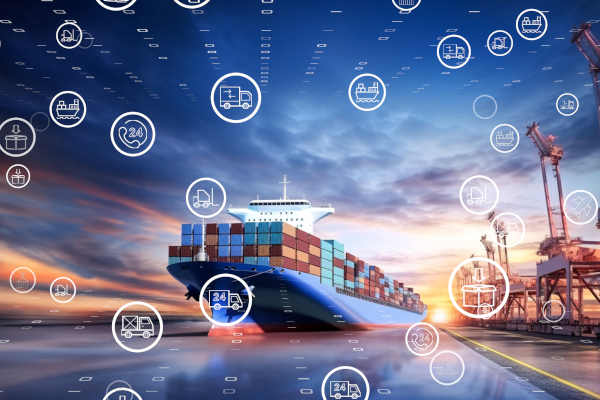When supply chain professionals gather and discuss disruptions, the conversation typically turns to physical disruptions. But what if the biggest disruption is not wars, climate change, or geopolitical? What if the biggest issue facing a supply chain is actually growth?
That is how Kenneth Engel, SVP of internet giants at Schneider Electric answered during a panel discussion last month at the Manifest 2024 conference in Las Vegas. Engel, in response to a question from moderator Donna Palumbo-Miele, managing director and founder of Concordia Supply Chain Group, said Schneider’s biggest supply chain disruption has been rapid growth.
“We normally have been growing at low single digits and that was normal for our industry in the last four years,” he said. “It’s been high double digits plus growth across our six different businesses. And that shocked our supply chain so to speak. And we all know as supply chain professionals that forecasts aren’t always accurate, to say the least. And that’s where we’ve really had a lot of trouble.”
Engel went on to say that the biggest issues have been with upstream suppliers, especially where so many of those are small and medium-sized businesses that have just not been able to scale as quickly as Schneider’s growth dictates.
“We’ve struggled a bit in our factories and distribution centers, but we’ve been able to manage through that,” Engel noted, adding that Schneider embarked on a plan to assign 100 procurement professionals on the project to address these challenges.
“And when I say project, we needed to figure out which suppliers were struggling [and] which ones were going to struggle years ahead,” he said. “When we look at our long-term forecast … we started with 70% of our revenue in North America. We identified 37,000 components that have been historically our biggest challenges. We tied them to about 300 suppliers and we went to work. We hired a consulting company because we wanted to do this in months, not years. And we got intimate with those 300 suppliers on what are their constraints, what are their challenges and how do we help them. And we came out with over 600 action items on things that we’re still working on.”
Schneider onboard another 200 or so suppliers to build redundant capacity, and met with the C-suites of these businesses to ensure their business model aligned with Schneider’s. The process has become part of the company’s regular system of management, Engel said.
A cyberattack kicks change management into gear
At Beiersdorf, it was a cyberattack that turned the German cosmetics company onto the change that was needed.
“We had a cyberattack in 2017 and the company stalled for two weeks,” Emberger said. “We could not fulfill any orders, we couldn’t even use our phones, and that showed us the vulnerability from the machines and the factories, which were all impacted by the virus to our planning systems and to our ERP system and so forth.”
That incident kickstarted a digital transformation for the company that resulted in building up redundancy in procurement and the use of artificial intelligence to improve predictability.
“[We] started strategic partnership programs and put resilience in our factories. We lowered the capacity utilization [and] we put backup portfolios in place,” Emberger said, noting that the process helped the company navigate the COVID-19 disruptions with a 98% service level.
Beiersdorf is also facing disruptions from regulations. In fact, Emberger said regulations represent the biggest disruptions that company faces.
“We use a lot of chemicals; we use a lot of plastic in our packaging; and this really has to be changed toward a net zero target CO2 footprint reduction that limits the amount of suppliers and limits the amount of materials available post-consumption—recycled material, aluminum, plastic and others for us,” he said.
Digitization drives change
For both companies, a digital push is helping drive the change they need. Those efforts, though, require an end-to-end approach. Emberger said that process starts at the very beginning of the supply chain.
“I think the first thing is before you think end-to-end, you need to think about the purpose of your supply chain,” he said. “How do you really generate value for your company and how do you outpace your competition? I think this is what you need to think about and this gives you the setup of your supply chain. Our supply chain is consumer-led.”
Digitization also allows the supply chain to move from predictive to prescriptive, he said.
“Many companies are still very vertical,” Emberger noted. “Logistics, manufacturing, shipping, go-to-market—this will change. The killer is when you bring a supply chain together, you bring it as close as possible together, you bring the organizational around it [and] you have one organization leading it.”
SC
MR


More Government & Regulation
Latest Podcast

 Explore
Explore
Topics
Business Management News
- Strengthening customer fulfillment: Building a strategic stakeholder network
- The hard job of teaching soft skills
- Trump picks former Wisconsin congressman Sean Duffy for DOT secretary
- Made in Mexico, manufactured by China
- Retail sales see gains in October, reports Commerce and NRF
- Balancing green and speed: Home delivery insights from the pandemic era
- More Business Management
Latest Business Management Resources

Subscribe

Supply Chain Management Review delivers the best industry content.

Editors’ Picks




